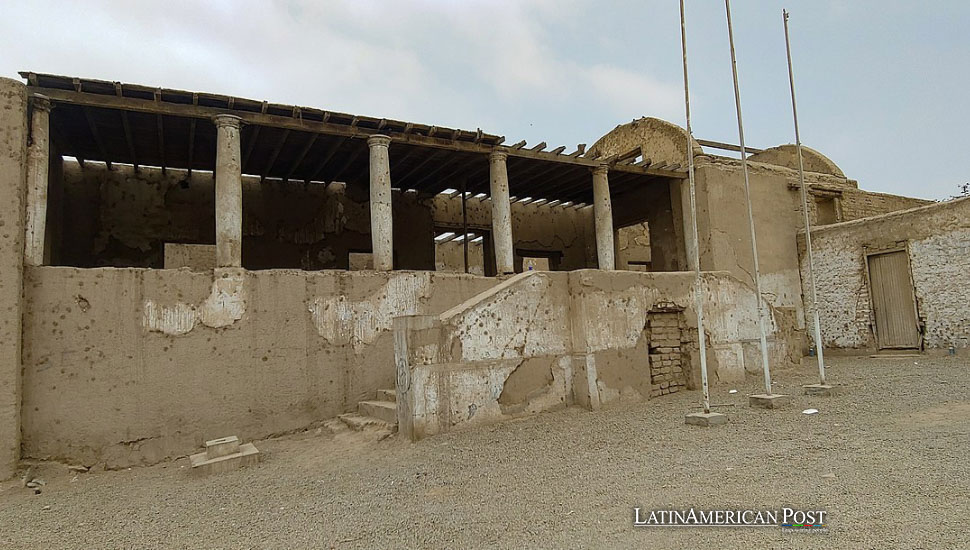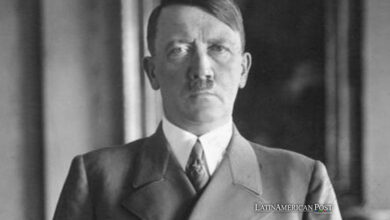Restoring Peru’s Historical Treasure and Landmark of Independence

The Peruvian government has announced plans to restore the historic Punchauca Hacienda in Lima, where in 1821, a crucial meeting between Argentine General José de San Martín and Spanish Viceroy José de la Serna took place, marking a pivotal moment leading up to Peru’s independence. As stated by the Ministry of Culture, this restoration project aims to preserve a significant cultural site while benefiting the local community.
The Punchauca Hacienda holds a remarkable place in Peru’s history. The meeting on June 2, 1821, between San Martín and La Serna, is often hailed as the “first intercontinental diplomatic summit” in the country. This historic encounter was crucial in the events leading to Peru’s independence. The restoration project, dubbed the ‘Casa Hacienda Punchauca Investment Project,’ will benefit approximately 72,952 residents of Carabayllo, a district in northern Lima. By restoring this site, the government aims to provide public cultural spaces that promote identity and values, enhancing the community’s connection to its historical heritage.
The project began with signing a contract to prepare the technical work file with the Muraria consortium, which specializes in architecture and engineering. The investment of 582,899 soles (approximately $156,273) will cover the cost. The technical file will be developed over 180 days, ensuring the infrastructure is well-preserved, equipped with appropriate cultural service facilities, and managed effectively.
The meeting at Punchauca Hacienda was a diplomatic effort by San Martín to persuade La Serna to recognize Peru’s independence. However, the ruler claimed he had no official instructions regarding this proposal, leading to subsequent meetings between delegates over the following days without reaching an agreement. Despite the lack of a formal resolution at Punchauca, these discussions set the stage for the eventual withdrawal of Spanish forces.
On July 9, 1821, Viceroy La Serna abandoned Lima, allowing the independence forces to enter the city. San Martín declared Peru’s independence on July 28, 1821, a significant milestone in the nation’s history. However, the struggle for independence continued for several more years. The final victory came on December 9, 1824, at the Battle of Ayacucho, led by General Antonio José de Sucre, a lieutenant of Simón Bolívar. This battle marked the definitive end of Spanish rule in South America.
Celebrating the Bicentennial of Independence
The restoration of Punchauca Hacienda is part of a broader initiative spearheaded by President Dina Boluarte’s administration to celebrate the ‘Bicentennial of the Consolidation of Independence. ‘ This year marks the 200th anniversary of the decisive battles of Junín and Ayacucho, significant events in the fight for independence. By restoring historic sites like Punchauca Hacienda, the government aims to honor these milestones and educate future generations about the struggles and triumphs of their ancestors.
Punchauca Hacienda’s restoration will preserve a crucial piece of history and serve as a symbol of resilience and national pride. The project includes three main components: ensuring the infrastructure’s good condition, providing adequate cultural service facilities, and strengthening the management capabilities of these services. The government seeks to create a sustainable cultural site that will benefit locals and visitors.
A Symbol of Cultural Heritage
The significance of Punchauca Hacienda extends beyond its historical role in the independence movement. It represents Peru’s rich cultural heritage and its people’s enduring spirit. The restoration project is a testament to the country’s commitment to preserving its history and promoting cultural identity. The hacienda will become a center for cultural activities, allowing the community to engage with their heritage and fostering a sense of pride in their shared history.
Restoring Punchauca Hacienda also highlights the importance of historical preservation in Latin America. Many countries in the region have similar sites of historical significance that risk being lost to time. By investing in restoring and maintaining such sites, governments can ensure that future generations have access to these tangible links to their past. This not only enhances cultural understanding but also promotes tourism and economic development.
As the restoration project progresses, it will undoubtedly face challenges. Ensuring the authenticity of the restoration while making the site accessible and functional for modern use requires careful planning and execution. However, the benefits far outweigh the challenges. The restored Punchauca Hacienda will stand as a testament to Peru’s rich history and the enduring legacy of its fight for independence.
The Peruvian government’s commitment to preserving its cultural heritage through projects like restoring Punchauca Hacienda is commendable. It reflects a broader recognition of the importance of history in shaping national identity and promoting unity. As the nation celebrates the bicentennial of its independence, the restored Punchauca Hacienda will serve as a powerful reminder of the sacrifices made by those who fought for freedom and the importance of preserving that legacy for future generations.
Also read: Ancient Peruvian Temple Ruins Unearthed by Archaeologists
The restoration of Punchauca Hacienda is a significant step in preserving Peru’s historical and cultural heritage. It honors the memory of those who fought for independence and provides a valuable resource for educating future generations. As the project moves forward, it will serve as a model for other countries in the region, demonstrating the importance of investing in historic preservation. The restored hacienda will symbolize resilience, national pride, and the enduring legacy of Peru’s fight for independence.





